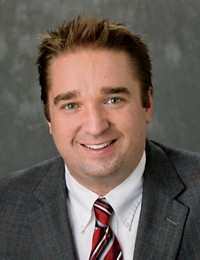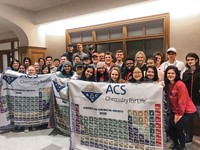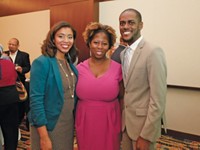Advertisement
Grab your lab coat. Let's get started
Welcome!
Welcome!
Create an account below to get 6 C&EN articles per month, receive newsletters and more - all free.
It seems this is your first time logging in online. Please enter the following information to continue.
As an ACS member you automatically get access to this site. All we need is few more details to create your reading experience.
Not you? Sign in with a different account.
Not you? Sign in with a different account.
ERROR 1
ERROR 1
ERROR 2
ERROR 2
ERROR 2
ERROR 2
ERROR 2
Password and Confirm password must match.
If you have an ACS member number, please enter it here so we can link this account to your membership. (optional)
ERROR 2
ACS values your privacy. By submitting your information, you are gaining access to C&EN and subscribing to our weekly newsletter. We use the information you provide to make your reading experience better, and we will never sell your data to third party members.
Careers
Bernadette A. Hernandez-Sanchez
For an enthusiastic experimentalist, the ACS Scholars program opened doors of opportunity
by A. Maureen Rouhi
April 26, 2010
| A version of this story appeared in
Volume 88, Issue 17

From an early age, Bernadette A. Hernandez-Sanchez was drawn to science. “I would always try to repeat experiments shown on ‘Mr. Wizard’s World,’ ” she remembers, referring to a 1980s science program on the Nickelodeon children’s television network. Lots of science-related activities interested her, she recalls; at one point, she wanted to become an astronaut. During her senior year of high school, however, an internship in the Advanced Materials Laboratory at Sandia National Laboratories focused her general interest in science on chemistry.
Working at Sandia under the mentorship of Timothy J. Boyle, “I just had fun,” Hernandez-Sanchez says. “I liked chemistry because you got to work with your hands. I liked mixing solutions, seeing color changes, and growing crystals,” she recalls. In Boyle’s lab, she also witnessed how the basic chemistry she was doing—studying ferroelectric materials used in computer chips—could be “applied to something that everyone used,” she says.
Talking about her work, Hernandez-Sanchez exudes an infectious joy. The self-proclaimed “lab rat” is now a senior member of the technical staff at Sandia, working on projects including dielectric materials for capacitors and biofouling- and corrosion-proof devices for harnessing the ocean’s kinetic and thermal energy. Her research so far has yielded 20 publications and three patent applications. She credits her success to four scientists.
Those four scientists are Boyle, who introduced Hernandez-Sanchez to research and encouraged her to go to college and then to graduate school; Michael D. Heagy, her undergraduate thesis adviser; and Peter K. Dorhout and Ellen R. Fisher, her graduate advisers at Colorado State University, where Hernandez-Sanchez earned a Ph.D. in 2004. Boyle and Heagy brought the ACS Scholars Program to her attention and helped her apply. She received the ACS scholarship during her undergraduate years at the New Mexico Institute of Mining & Technology.
“Bernie was fantastic and deserves all the credit for her success,” Dorhout says. Noting that Hernandez-Sanchez was selected to attend the 2002 Nobel Laureate meeting in Lindau, Germany, he adds, “She is certainly among an elite group and someone ACS can be very proud to have supported.”
Hernandez-Sanchez was born of Hispanic parents and is the oldest of seven siblings who grew up in the South Valley area of Albuquerque, N.M., an impoverished place where, she says, not a lot of people go to college. Her parents encouraged her interest in science “as best as they could,” she says, but they didn’t understand what a scientific education and career are about. “It was a culture shock for them, the scientific world,” she explains. “Tim and Mike Heagy guided me, showed me what it was like to be a chemist.”
“Burner” is Boyle’s nickname for Hernandez-Sanchez. The two met in 1993, when “Burner was randomly assigned to my lab” as one of the high school students in the Albuquerque Public School’s Career Enrichment Program, Boyle recalls. He expected the intern to mostly do grunt work, but “Burner was so enthusiastic, so interested and amazingly capable, that I put her on research work,” he says.
Hernandez-Sanchez gave up high school band and other extracurricular activities and just kept coming back, during weekends and vacations, to do research, Boyle says. In two years, she published her first paper (Mat. Res. Soc. Symp. Proc. 1995, 393, 101).
Not only is Hernandez-Sanchez passionate about research, but she is also committed to outreach—especially to rural communities with Native American and Hispanic populations. Back in Boyle’s lab as a postdoc, she helped design the CSI: Dognapping Workshop, which she continues to help coordinate. The two-hour workshop, held at Sandia every year since 2006, introduces elementary school children to science, engineering, and nanotechnology by engaging them as “junior scientists” and guiding them to pore over evidence at various analytical stations to help solve the mystery of a missing dog.
Without the ACS scholarship, “I would not have had the finances to finish school,” Hernandez-Sanchez says. The support, she adds, enabled her to focus on her undergraduate research and opened the doors to graduate school, exciting research, numerous accolades, and eventually to a position at Sandia.
Please contact Kathy Fleming in the ACS Development Office for more information on contributing to this important program. She can be reached at (800) 227-5558 ext. 6210, or by e-mail at k_fleming@acs.org.






Join the conversation
Contact the reporter
Submit a Letter to the Editor for publication
Engage with us on Twitter